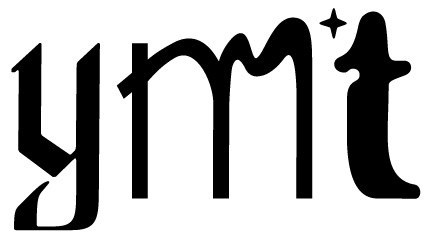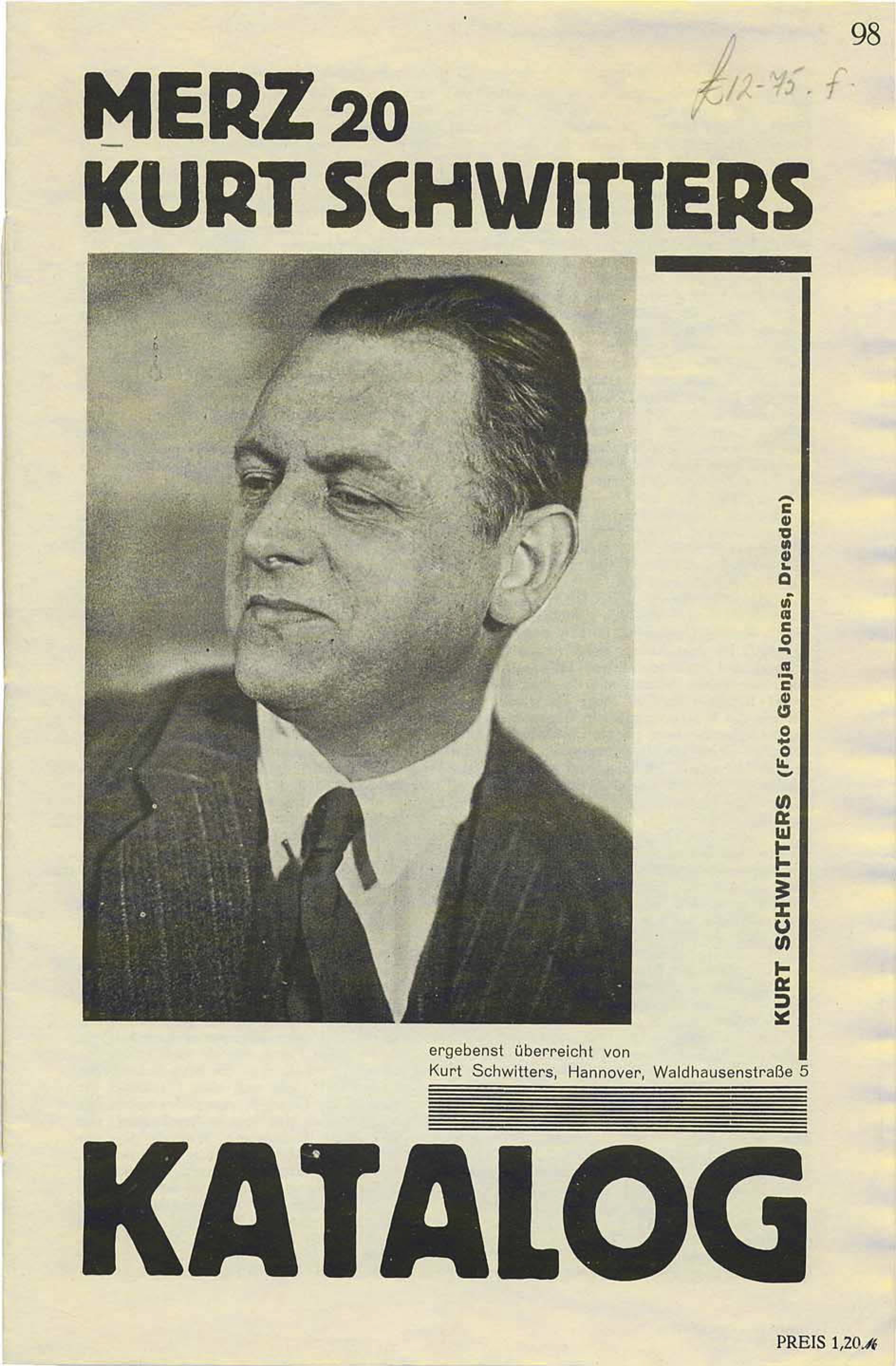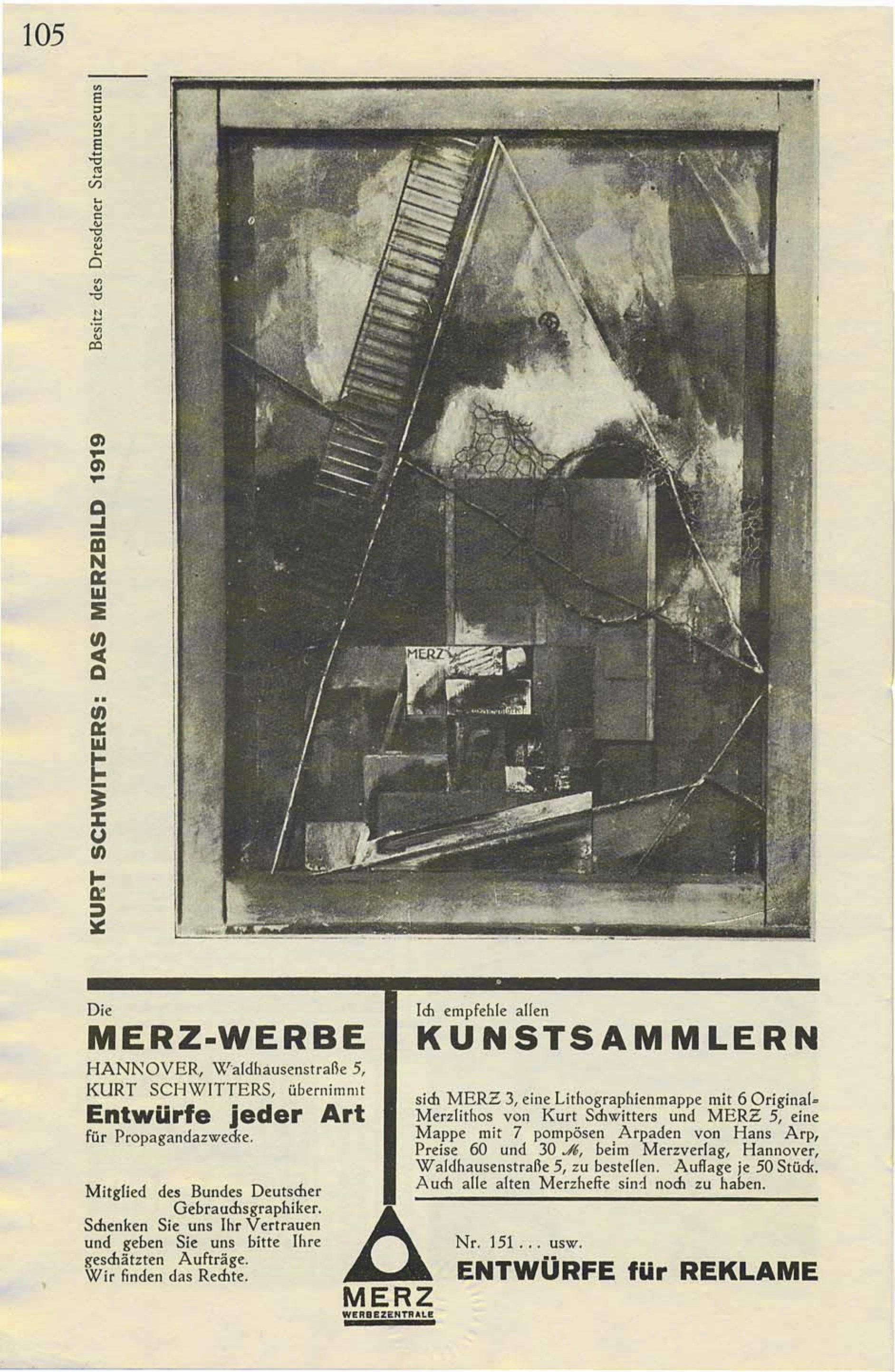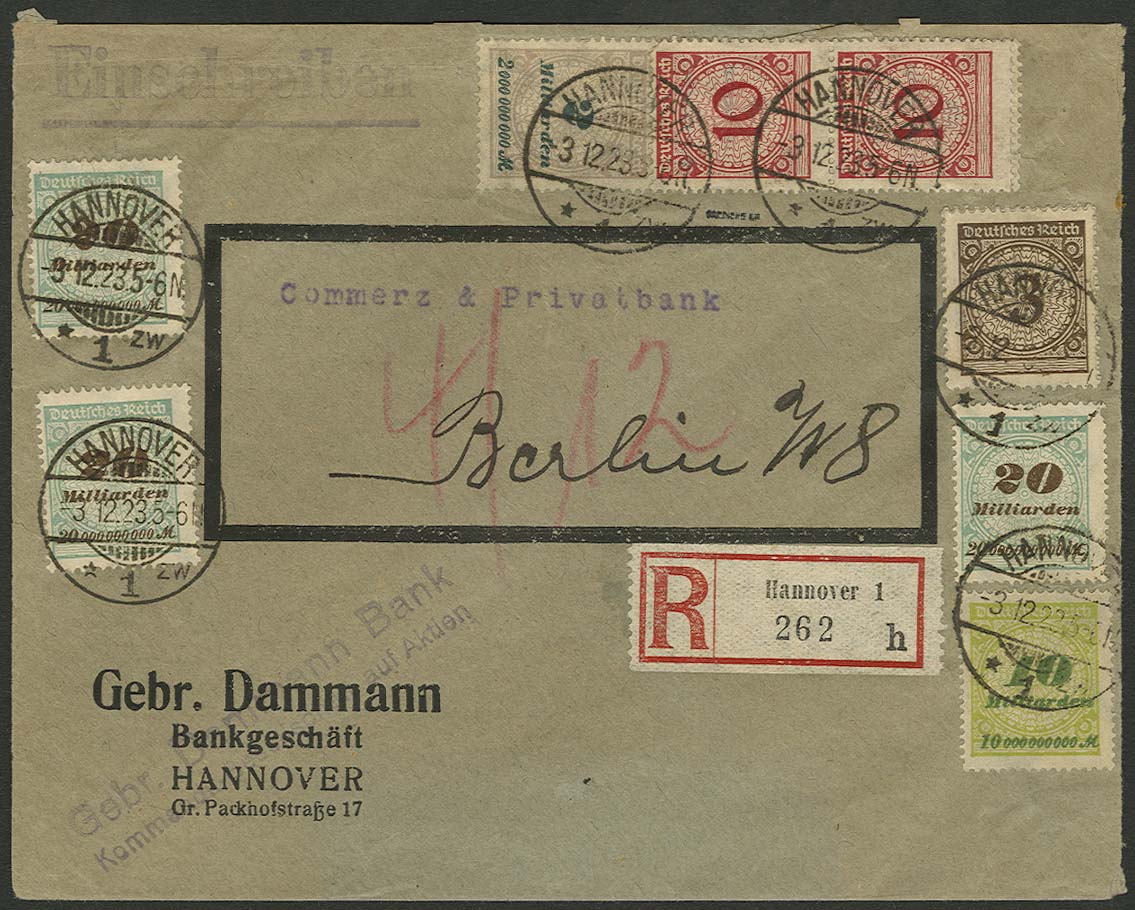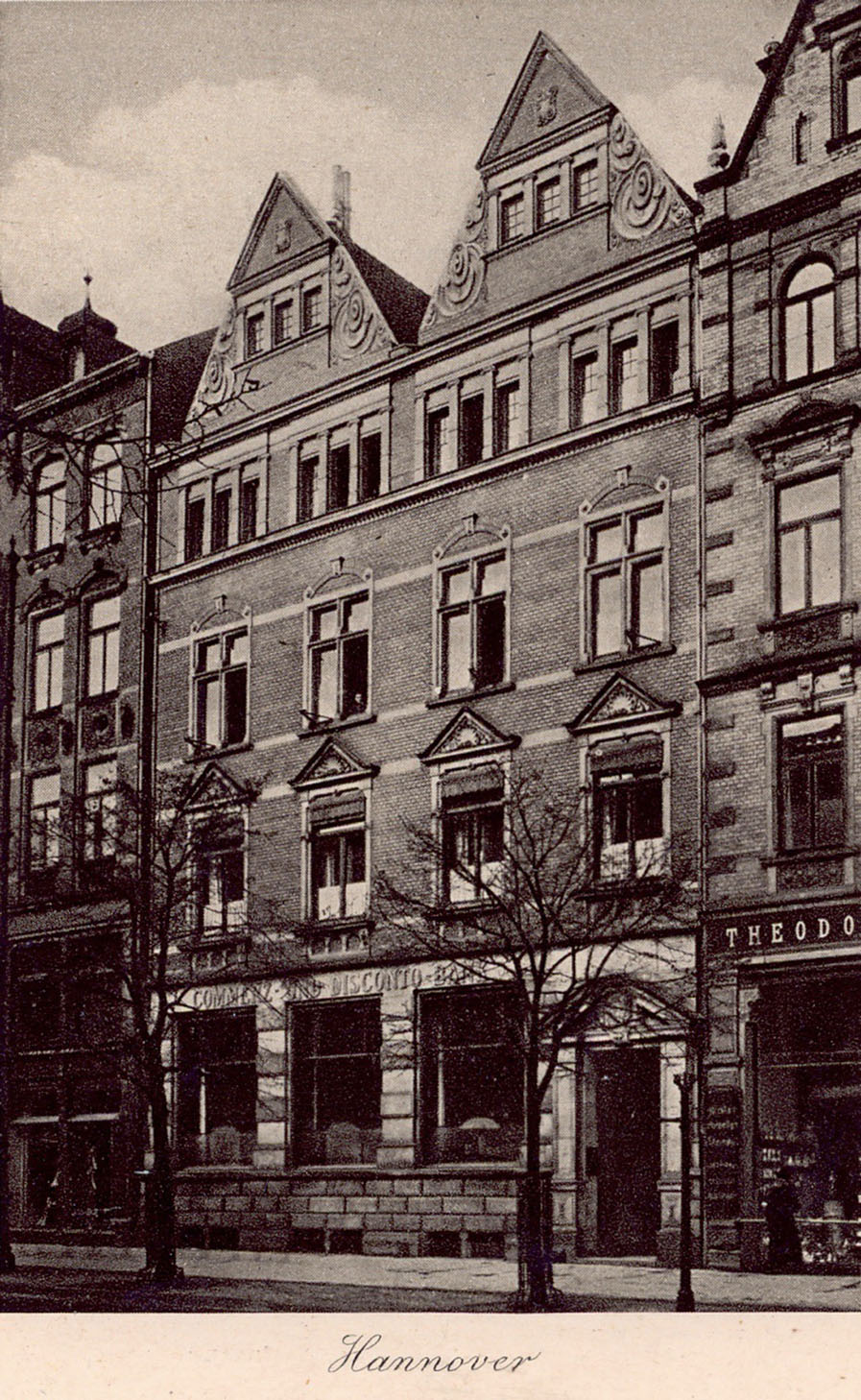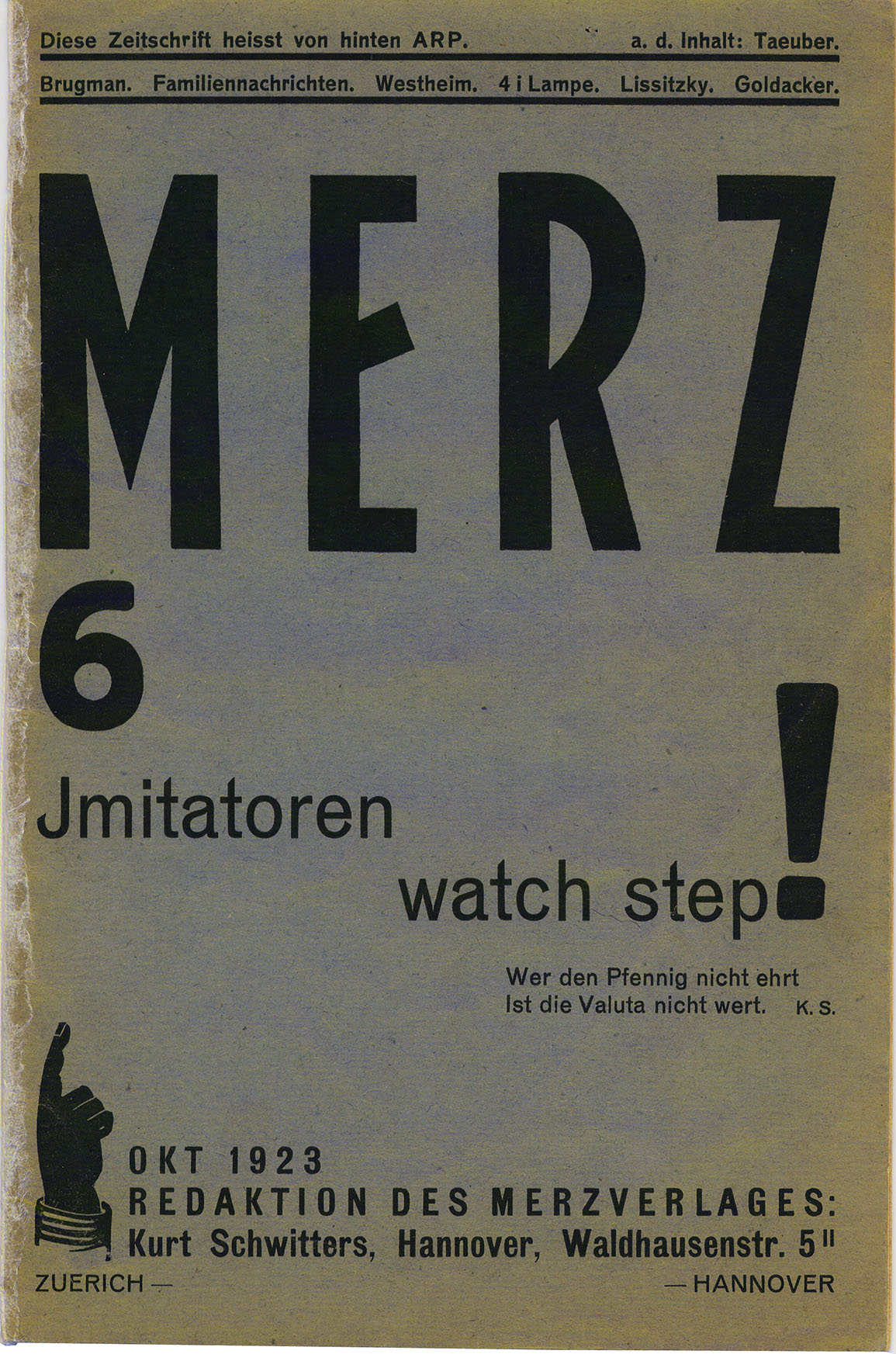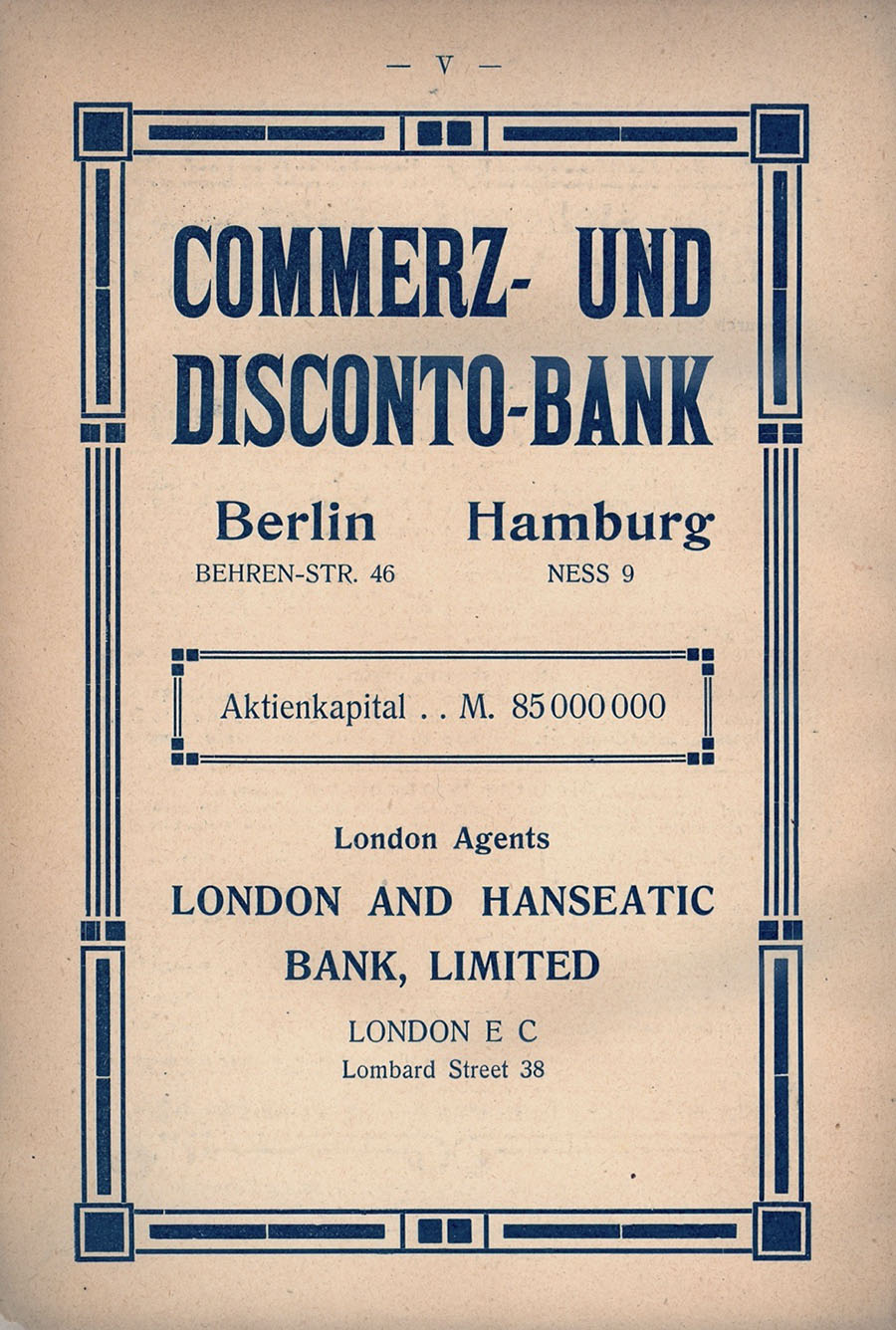Origins of Merz
Follow the money…
When referring to the origins of the word Merz, many established and authoritative texts from the 20th century (and indeed many from this century) maintain or imply, that Merz was cut from printed material produced for the Commerz- und Privat-Bank (Schwitters, 1994). The latter explanation would appear to stem from Schwitters’ own description about the source of the word Merz: in particular, the explanation given in the Merz 20 catalogue of 1927.
In the Merz 20 catalogue, Schwitters explains that Merz, is the second syllable of the word “KOMMERZ”. He goes on to explain that the word Merz was cut from an advertisement for the KOMMERZ UND PRIVATBANK and stuck onto what then became an assemblage he named Das Merzbild, Schwitters dates this work 1919. As a result of this collaging/assemblage process, the word Merz was realised sometime during the creation of Das Merzbild. Schwitters also goes on to say that he needed a collective name for his genre of glued and nailed assemblages or pictures, when exhibiting these at the Sturm Gallery, Berlin in July 1919. Thus, sometime before the July exhibition, Schwitters selected the word Merz as a collective name for his genre of collages and/or assemblages (Schwitters, 1927 and 1965).
However, it should be noted the Merz 20 catalogue explanation of the origins of the word Merz, plus the meanings and propositions Schwitters attributes to it, was published some eight years after the creation of Das Merzbild. It should also be noted that a German bank with the spelling of Kommerz (that is with the letter K and not the letter C) has never existed. It seems likely that Schwitters may have been using the word Kommerz in a pejorative sense (that is in the sense of striving for profit and placing this ahead of all other considerations) (English dictionary, 2021) when alluding to a printed advertisement for the Commerz- und Privat-Bank.
Commerz- und Privat-Bank, uses a hybrid of Latin and German spelling. It would also seem the founders of the bank employed the spelling of Commerz with the letter C, to create a company name with positive associations to classical antiquity, stability and longevity, in tandem with the bank’s German origins. Such associations and qualities being considered desirable for a 19th century and indeed a 21st century bank’s name and brand – Commerzbank, Germany’s second largest bank (Corporate finance Institute). This hybrid of Latin and German spelling was also likely intended to avoid and/or mitigate any pejorative or negative interpretations being attributed to the company. Schwitters’ “KOMMERZ” description in the Merz 20 catalogue, would seem to be making a pun on this.
In view of Schwitters’ inclination toward word play, employing the word Kommerz as a pun, in relation to the Commerz- und Privat-Bank would seem a plausible supposition. Particularly as the Merz 20 catalogue description was also retrospective to the Weimar Republic hyperinflation/banking crisis that culminated in 1923. A crisis where a loaf of bread that cost 250 marks in January 1923, rose to 200,000 million marks by November of the same year. German banks (including the Commerz- und Privat-Bank) were printing multiple zeros onto their existing bank notes and/or reprinting new bank notes. The hyperinflation was so severe that by the autumn of 1923, it cost more to print a bank note, than the note was worth (BBC).
However, the origin of Merz as described above is somewhat problematic. The Commerz- und Privat-Bank did not exist when Das Merzbild was created or first exhibited in July 1919. The Commerz- und Privat-Bank, came about through the acquisition of the Mitteldeutsche Privat-Bank (Magdeburg) by the Commerz- und Disconto-Bank (Hamburg and Berlin) in June 1920 (Krause, 2010). Almost a year after Das Merzbild was first exhibited and Schwitters coined the name Merz.
It is unlikely that any Commerz- und Privat-Bank advertising material was distributed prior to the acquisition of the Mitteldeutsche Privat-Bank. Mergers, takeovers and acquisitions tend to involve complex, sensitive and secretive negotiations. An acquisition is not generally made public until all the i’s have been dotted, the t’s crossed, the deal agreed and/or is very close to being signed off.
Therefore, it seems very likely the source of the word Merz, originated from printed material produced for the Commerz- und Disconto-Bank.
For some years prior to and during the creation of Das Merzbild, Commerz- und Disconto-Bank (head offices in Hamburg and Berlin) had branches throughout northern Germany. From 1908 there was a branch of the bank at Theaterstraße 12, Hannover. The Commerz- und Disconto-Bank was a 15- minute cycle ride (Steinitz, 1968) north of Schwitters home in Waldhausenstrasse 5. Certainly, by May 1918, Theaterstraße 12, had become a significant branch of the Commerz- und Disconto-Bank.
Commerz- und Disconto-Bank would have been a familiar name or high street brand in many cities and large towns, across northern Germany. However, by 1927, Commerz- und Disconto-Bank would have disappeared entirely from the high street and replaced by the Commerz- und Privat-Bank. Indeed, and as far as the public were concerned, the change on the high street from Commerz- und Disconto-Bank to Commerz- und Privat-Bank was most likely completed within a year if not months of the June 1920 acquisition.
Consequently, Schwitters 1927 description would seem to be based on the bank’s name in 1927, that is Commerz- und Privat-Bank, rather than its name from several years previously. It seems almost certain the word Merz, was cut from Commerz- und Disconto-Bank printed material. This would also seem to align with an earlier Schwitters description from 1923 in Merz 6 magazine. Here Schwitters explains that the word Merz originated from the second syllable of the word Commerz (Schwitters, 1923).
“It seems almost certain the word Merz, was cut from Commerz- und Disconto-Bank printed material.”
Schwitters’ Merz 6 magazine description does not mention the name of a bank, just the word Commerz. However, Commerz spelt with the letter C was not a proper or bona fide German word. At this time the word Commerz would seem to be almost unique to the Commerz- und Disconto-Bank as a trade/brand name. I have found only one other example of the word Commerz in use during the early 20th century: the Commerz Collegium in Altona, Hamburg. The Collegium was established in 1738 and still exists today. The Commerz- und Disconto-Bank was formed in 1870 by merchants in the Hanseatic City of Hamburg. The Commerz Collegium being a likely inspiration and/or source of the word Commerz in the bank’s name. Indeed, the merchant founders of The Commerz- und Disconto-Bank were if not members of the Commerz Collegium, then most likely closely associated with it.
“I have found only one other example of the word Commerz in use during the early 20th century: the Commerz Collegium in Altona, Hamburg.”
Consequently, and it would seem, like Bergen’s Unesco world heritage site the Tyskebryggen, the origin of comMERZ is Hanseatic.
The word Commerz was and still remains a key and distinctive component of a contemporary company brand, Commerzbank AG.
Merz magazine was and still remains a pioneering publication, Merz 20 magazine an early and innovative exemplar of brand development and coordination.
Kurt was and still remains a personal hero.
References
- Kurt Schwitters; Centre Georges Pompidou. Paris: Réunion des Musées Nationaux. Editions du Centre Pompidou. 1994 (exhibition catalogue).
- Schwitters, K. (1927) p.99-100, Merz 20 Kurt Schwitters Katalog. Hannover: Merzverlag, Waldhausenstrasse 5.
- English translation from the exhibition catalogue, p.11, Kurt Schwitters: retrospective. New York: Marlborough- Gerson Gallery, 1965.
- Cambridge German- English dictionary. Cambridge University Press 2021.
- Corporate finance Institute. https://corporatefinanceinstitute.com/resources/careers/companies/top-banks-in- germany/
- BBC https://www.bbc.co.uk/bitesize/guides/z9y64j6/revision/5
- Krause, D. (2010) Commerzbank 1870–2010, Eine Zeitreise. Dresden: Eugen-Gutmann-Gesellschaft.
- Steinitz, K. (1968) Kurt Schwitters; a Portrait from Life, p7. University of California Press. Kate Steinitz, friend and contemporary of Kurt, notes his love of cycling.
- Schwitters, K. (1923) Merz 6, Jmitatoren – watch step! Hannover: Merzverlag, Waldhausenstrasse 5.
